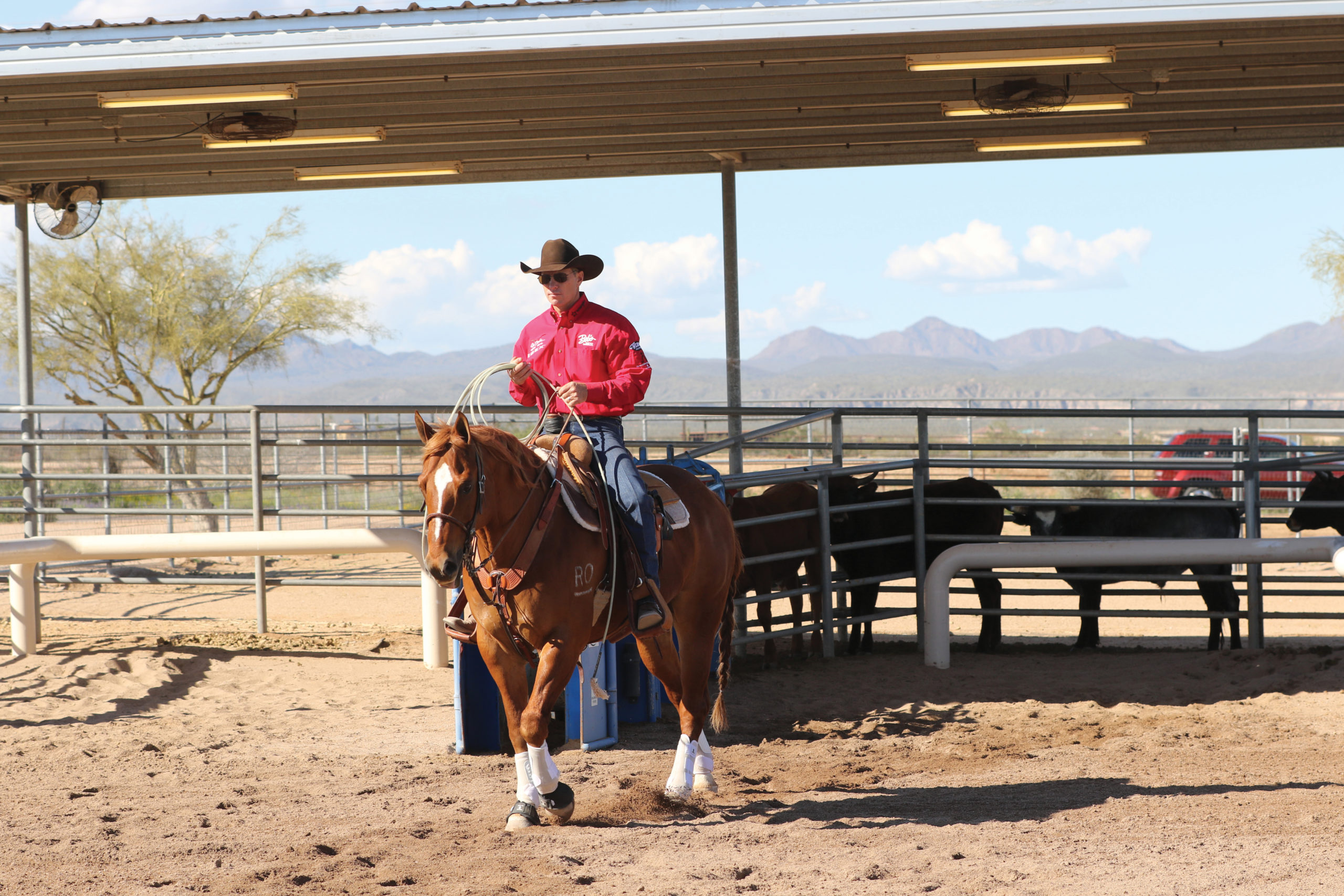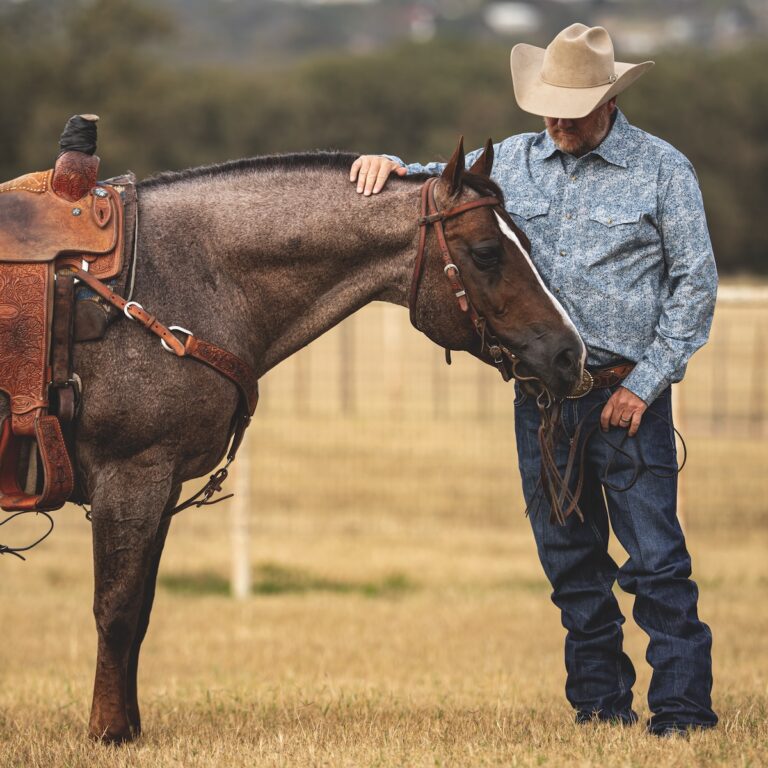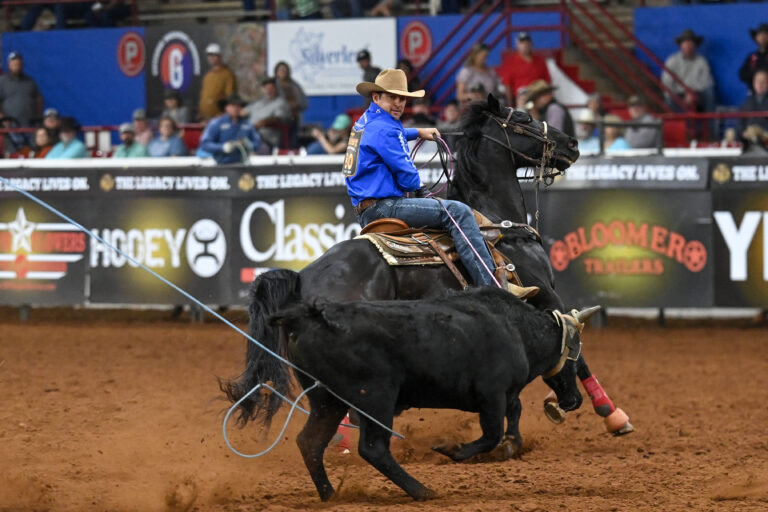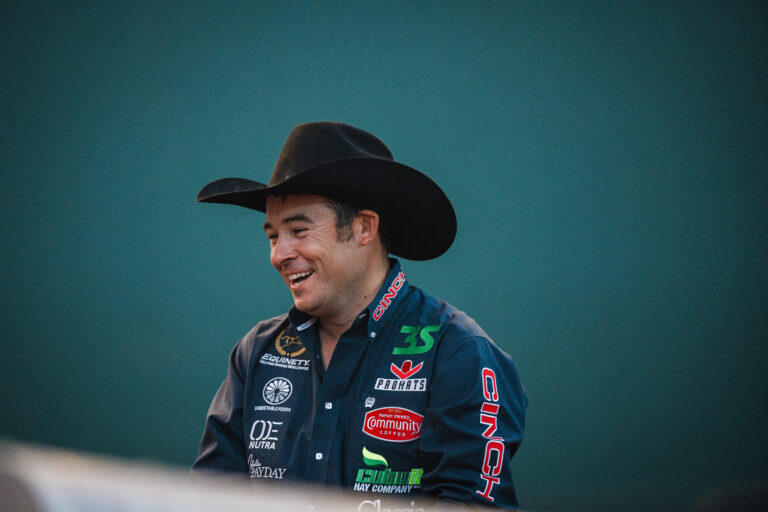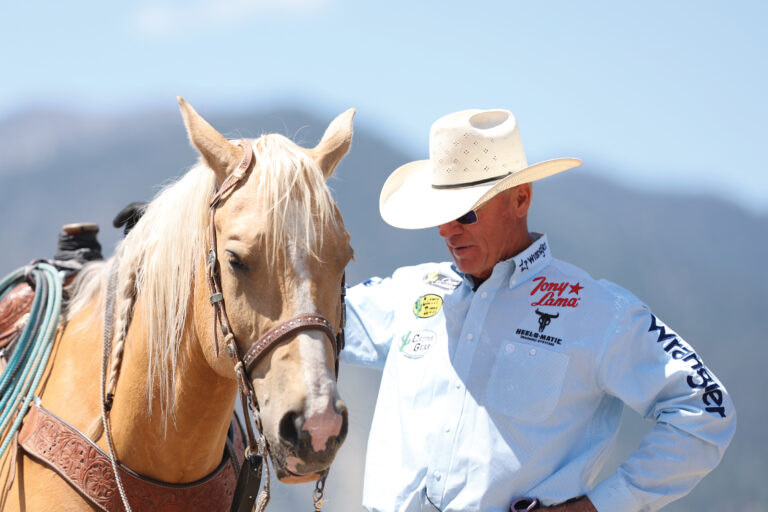I’ve made my career training and showing in the National Reined Cow Horse Association and American Quarter Horse Association, as well as training jackpot and futurity rope horses. I try to rope four or five days a week and get to jackpots whenever I can. Spending my time between the horse show world and the team roping community allows me to see where ropers can improve their horsemanship in and out of the arena. Here, I’ll outline five fundamentals essential to good horsemanship—horse wellness and soundness, proper tack adjustments, foundational training, bilateral conditioning and proper flexion—that ropers can double-check to be sure their horses are performing to the best of their abilities.
[WATCH: 7 Tips to Establish a Stop]
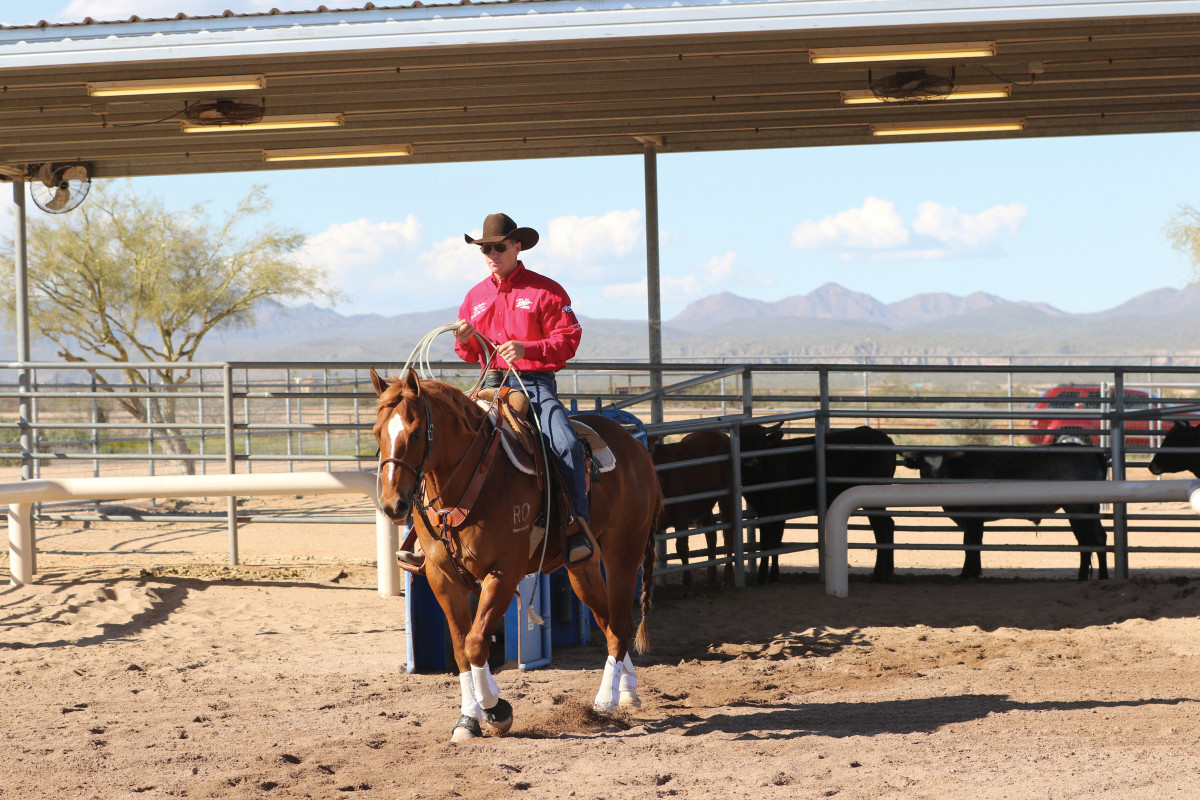
POINT 1
Before riding, I want to make sure my horse is sound. I clean his feet, make sure his feet are in good condition and watch him move. One of the easiest ways to check for soundness is by using a longe line or halter and lead rope. Trot the horse around you in both directions. Pay attention to the length of stride and range of motion of each leg. Shortened or quick strides, dropping a hip, or head bobbing are indications that your horse is sore. If this is something you’re uncomfortable with, seek out a friend or professional for guidance. After you start riding, trotting is a great place to start your warm-up because lameness is more evident at the trot than it is at the lope. Also, trotting is simply good practice to stretch and warm up muscles and joints prior to a workout. Too often, people have problems arise in the way their horses are working because they are missing a soundness or wellness issue.
[LEARN MORE: Bit Problem or Dental Problem?]
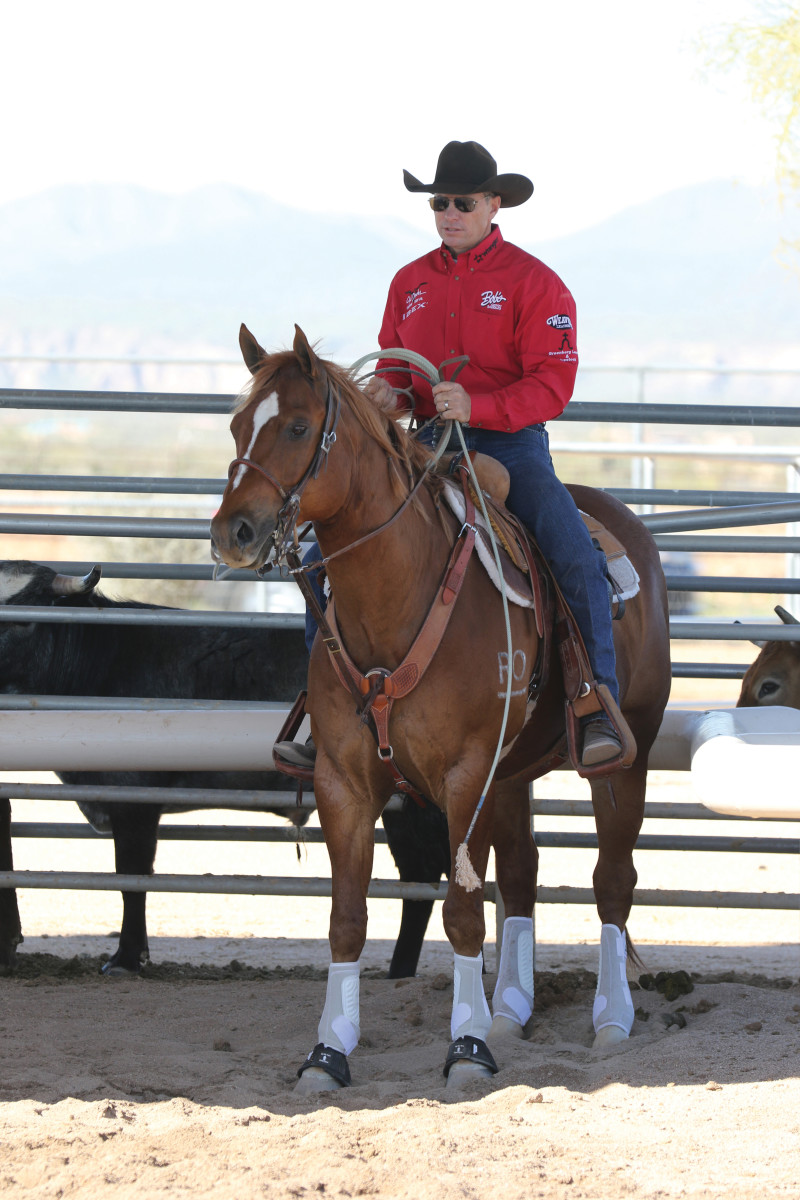
POINT 2
I want to be sure every piece of tack I’m using is properly adjusted and fitting each horse. The tie-down noseband should be approximately halfway between the horse’s nostrils and eyes. Placed too high, it loses its effectiveness as the horse is able to reach too far with its nose. Placed too low, the noseband can come into contact with the soft tissue above the nostril, which can cause discomfort and interfere with or restrict the airways. The tie-down strap should be short enough to provide the horse a balance point when extending its neck and nose, but not so short it forces the horse to carry its head vertical or behind vertical in relation to the ground.
[LEARN MORE: How to Use and Adjust Nosebands and Cavessons]
Your headstall should be adjusted so the mouthpiece is high enough in the horse’s mouth to cause a slight wrinkle at the corner of the mouth (cheek). Make sure the brow band or ear piece is centered to allow the bit to hang balanced on both sides.
Generally, I use a tighter curb strap (one finger between the strap and the chin) on loose-shank bridles with broken mouthpieces, i.e., snaffle, chain bits or hinge port.
I like two fingers width on my solid shank and/or solid mouthpiece bits as well as on more sensitive horses, which allows the bit to operate more slowly to minimize harsh or shock-y reactions.
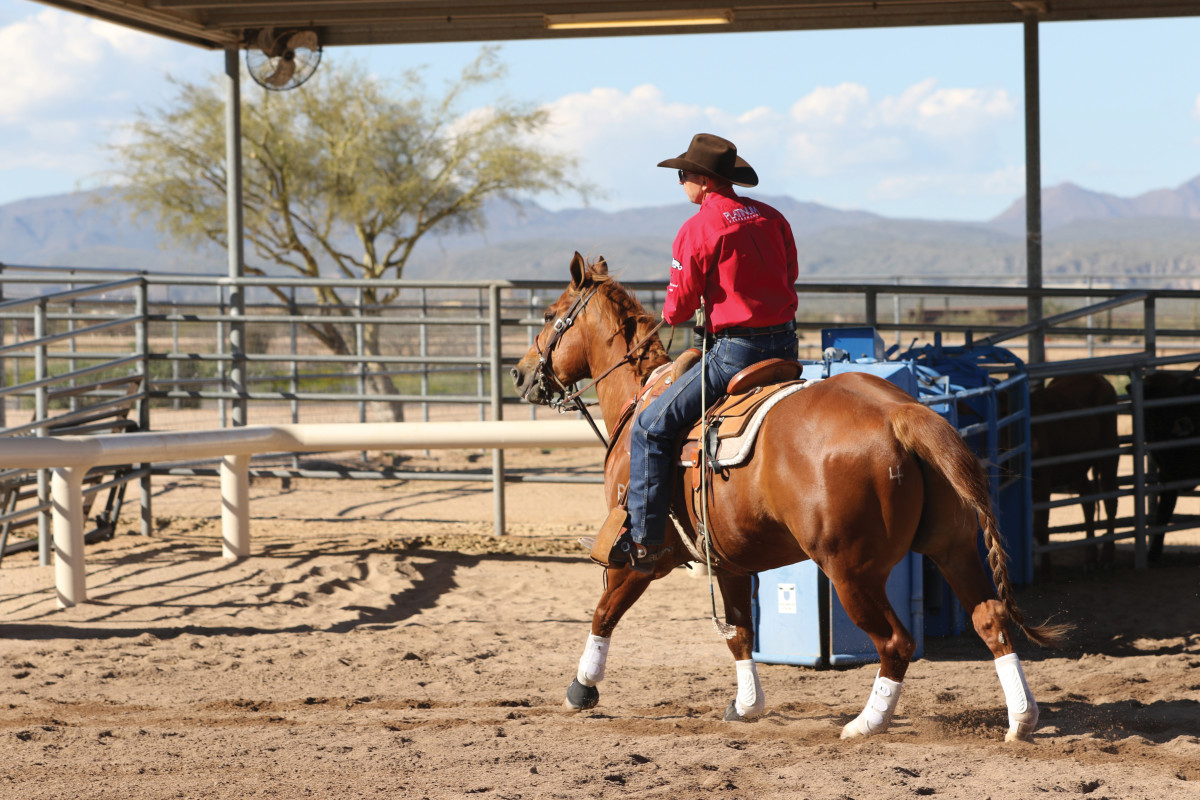
POINT 3
Horses trained with the proper foundation should operate comfortably at all different speeds/gaits, be willingly guided and be able to stop, turn and back with ease. Think of how all of these apply to a team roping run. Then, ask yourself: Where during my run was my horse soft, relaxed and working with a good attitude? Equally, if not more importantly, were there times during my run that my horse was anxious, bracey, or even out of control? Two major factors come into play to find the solution: (1) Is the horse physically able and trained properly to do the job we’re asking, and (2) Is the horse mentally sound and capable of being controlled from start to finish? Most of the time the answer lies firmly between the two. Positive, consistent training methods to suit the physical abilities of the horse, as well as controlled repetition to keep the horse in a relaxed frame of mind are key. Keep in mind that with increased speed comes increased physical and mental demands.
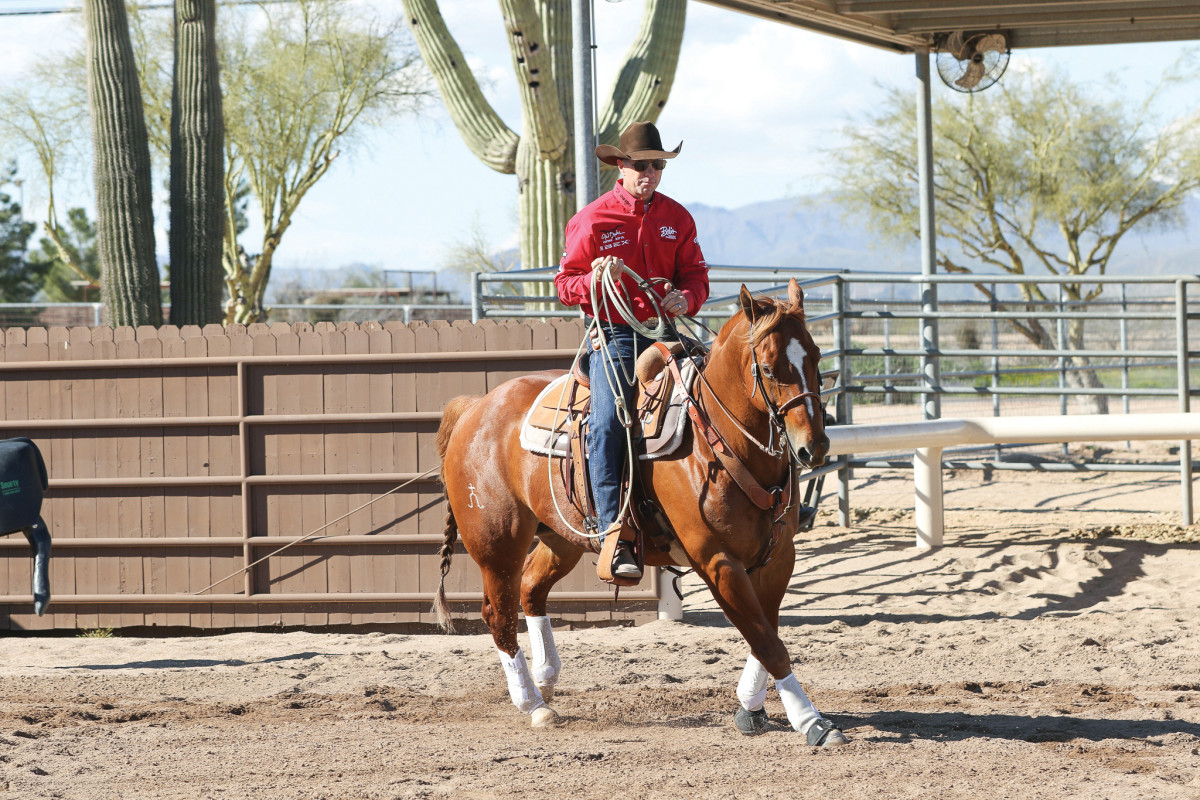
[WATCH: Reading Cattle]
POINT 4
To have a long-lasting, competitive athlete you must keep your horse conditioned. Good conditioning includes promoting lung capacity, blood circulation and strengthening both the left and right sides. Horses are bilateral. What they do on one side, they need to do on the other. Left circles in the left lead, right circles in the right lead. If you stay in the same routine all the time just doing everything in one direction, the impact on the horse creates more wear and tear to that side and possible weakening or atrophy on the side not getting worked enough. This can cause your horse to develop bad habits because he’ll get painful and/or start compensating, resulting in premature breakdown.
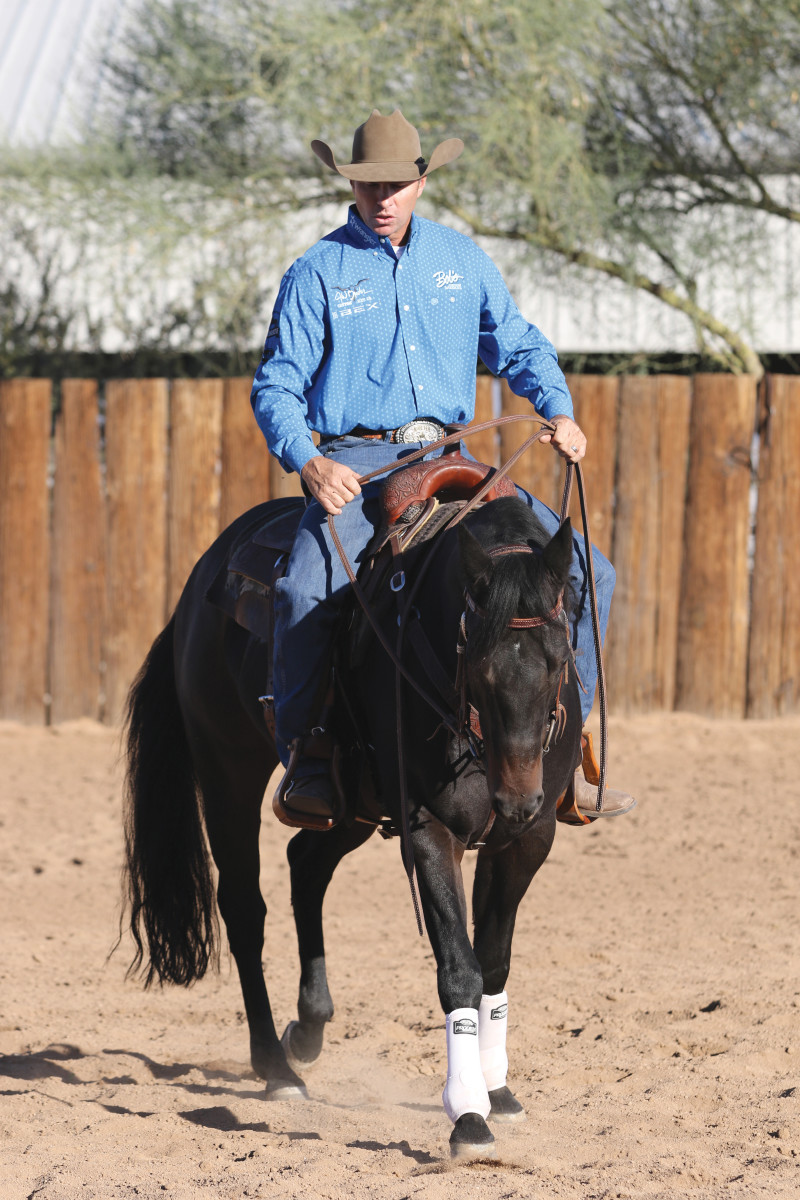
POINT 5
Flexion in the horse’s neck and back—breaking at the poll and wither housing and through the ribcage—will allow a horse to strengthen its lower back and hindquarters. This is accomplished by working the horse at all gaits (walk, trot, lope) with enough contact in the reins to ask the horse to break at the poll while traveling with forward or lateral motion signaled by use of the rider’s legs. I prefer using a ring snaffle to work on these flexion and suppling exercises to keep things simple and less frustrating for the horse that is looking for black and white signals of pressure and release. One of the keys to progress is recognizing when the horse is yielding to the signals and rewarding them by releasing the pressure.
These drills are most successful when done consistently and adding more force does not improve results. Another helpful hint during these exercises is to keep the horse slightly bent left or right as a straight horse can be more resistant than one that is traveling with bend. A rope horse needs to break at the poll, be soft in the mouth, round his back, and drive from behind. In doing so, the horse should effectively perform athletic maneuvers such as running, turning, and stopping with minimal wasted motion and less effort. TRJ




